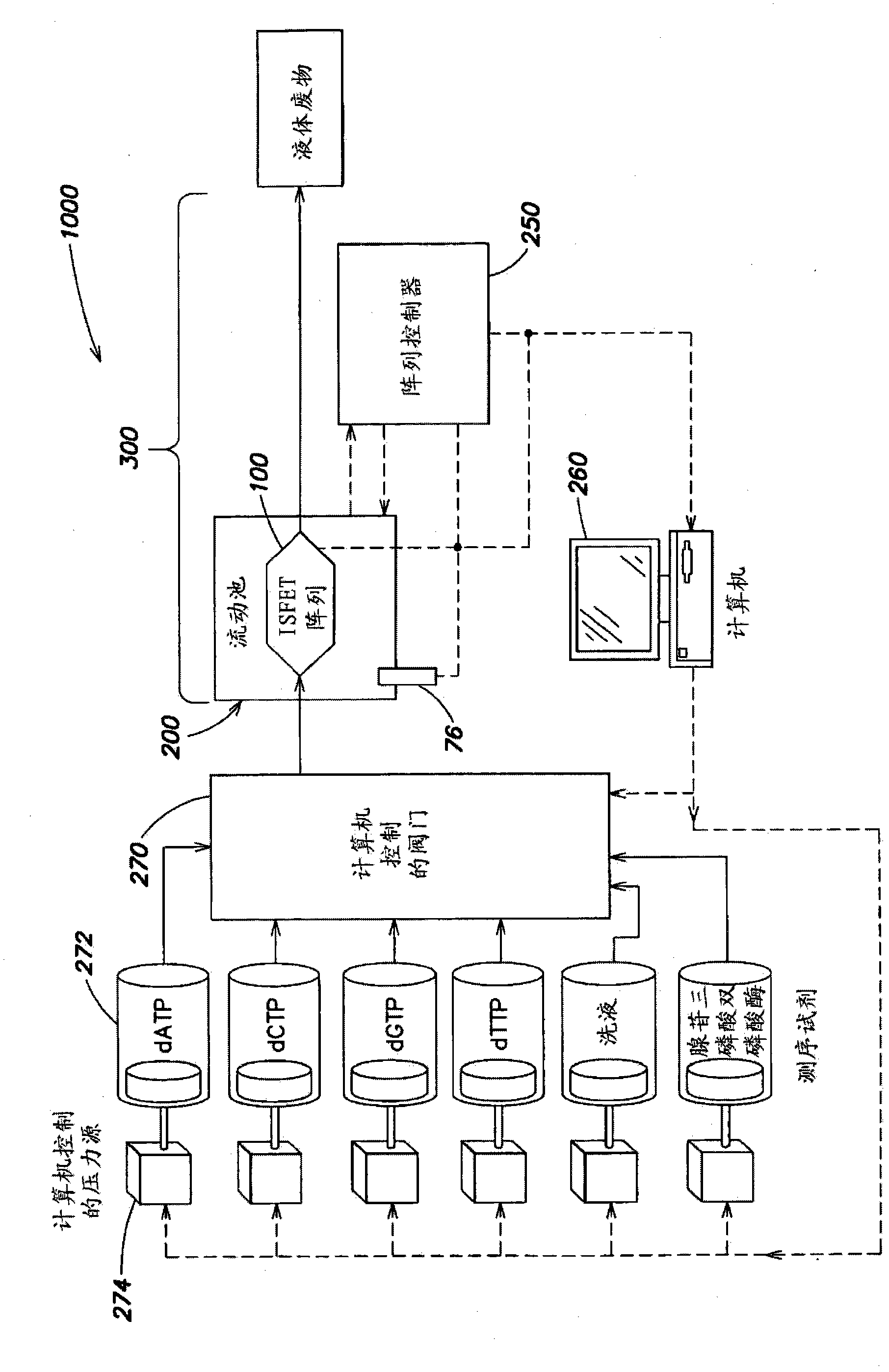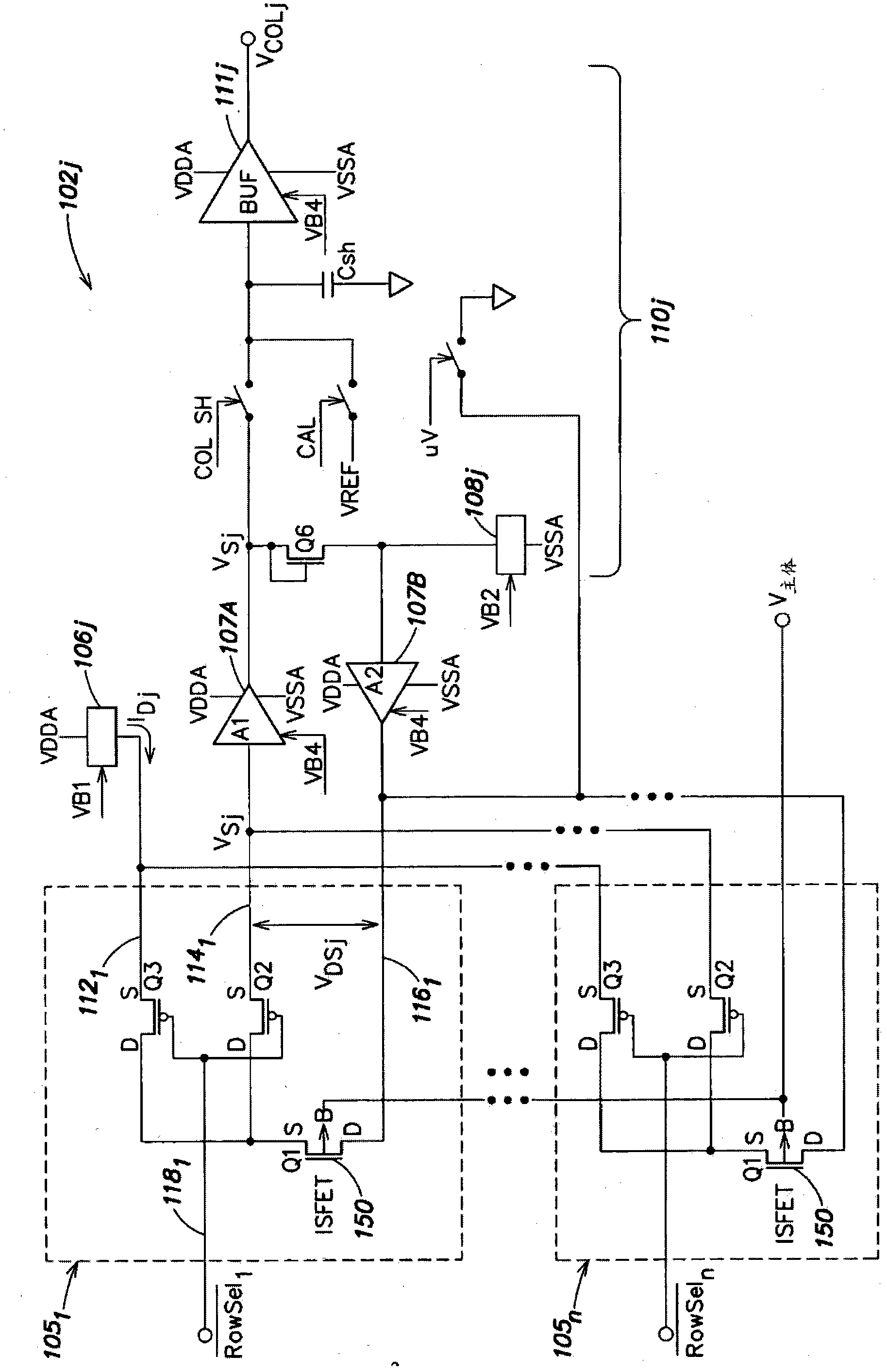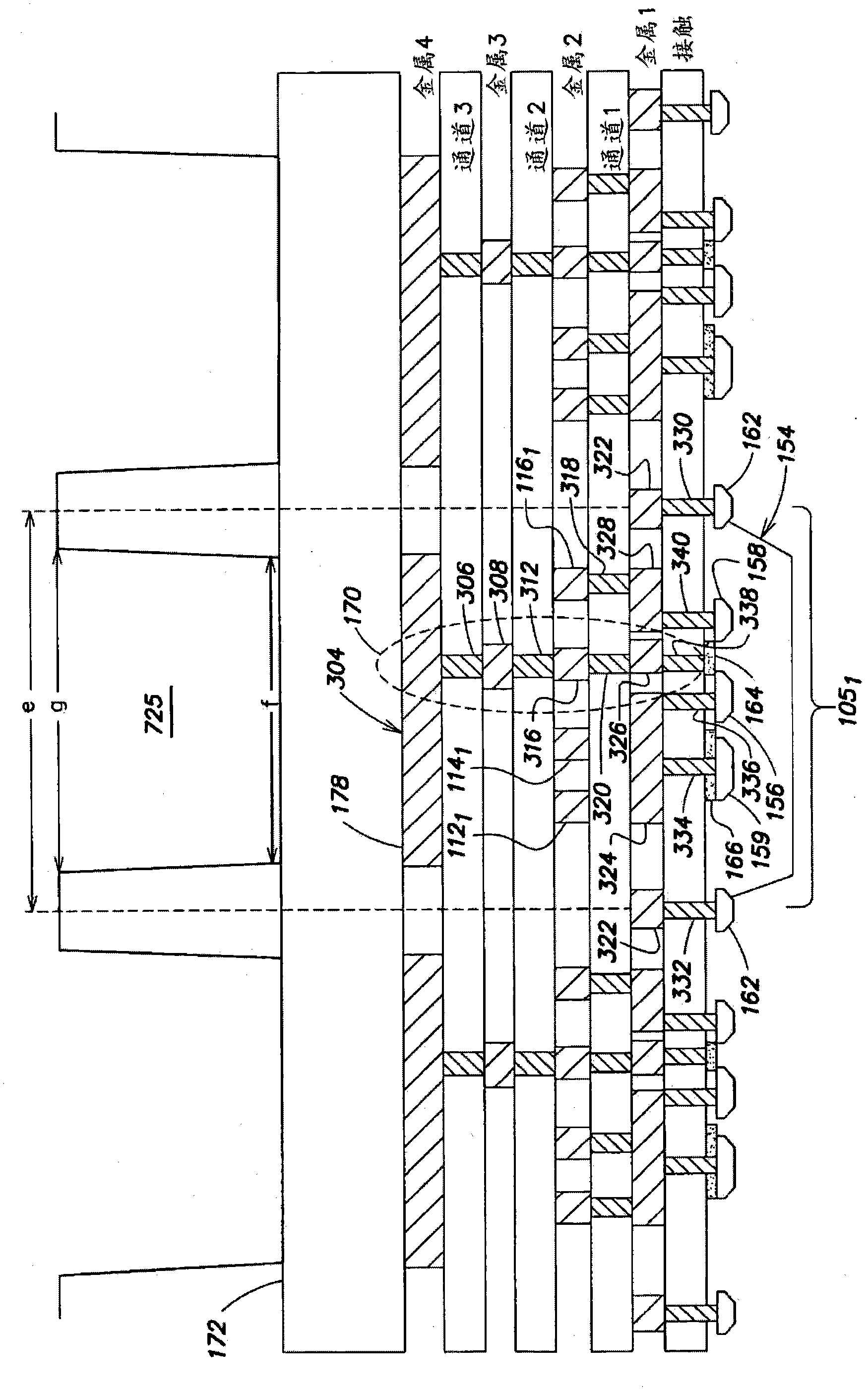Integrated Sensor Arrays for Biological and Chemical Analysis
A sensor array and sensor technology, applied in biochemical cleaning devices, biochemical equipment and methods, biochemical instruments, etc., can solve problems affecting measurement, deterioration, etc.
- Summary
- Abstract
- Description
- Claims
- Application Information
AI Technical Summary
Problems solved by technology
Method used
Image
Examples
Embodiment 1
[0172] Detection of polymerase extension on a chip by pH shift on an ISFET array
[0173] Streptavidin-coated 2.8 micron beads carrying biotinylated synthetic templates (to which the sequencing primer and T4 DNA polymerase bind) were subjected to 3 sequential flows of each of the 4 nucleotides. Each nucleotide cycle consists of a stream of dATP, dCTP, dGTP, and dTTP, each interspersed only with a buffer wash stream. The flow from the first loop is shown in blue, the flow from the second loop is shown in red, and the third loop is yellow. Such as Figure 10A As shown, the signals generated by both dATP streams are very similar. Figure 10B shows that the first (blue) trace of dCTP is higher than the dCTP flux from subsequent cycles, corresponding to the flux where the polymerase should incorporate a single nucleotide into each template molecule. Figure 10C demonstrates that the first (blue) trace of dGTP is about 6 higher (peak to peak) counts than the dGTP flux from subse...
Embodiment 2
[0175] Sequencing and data manipulation in a closed system
[0176] Sequences have been obtained from 23-mer synthetic oligonucleotides and 25-mer PCR product oligonucleotides. Oligonucleotides were attached to beads, which were then loaded into individual wells on a chip with 1.55 million sensors in a 1348 x 1152 array with a 5.1 micron pitch (38400 sensors / mm 2 ). Each bead was loaded with approximately 1 million copies of synthetic oligonucleotides, and each bead was loaded with approximately 300,000 to 600,000 copies of PCR products. The cycle of 4 nucleotides in and on the array was 2 minutes long. Nucleotides were used at a concentration of 50 micromol / liter each. Polymerase is the only enzyme used in this process. Data was collected at 32 frames / sec.
[0177] Figure 11A Raw data on synthetic oligonucleotides measured directly from ISFETs are depicted. 1 millivolt is equivalent to 68 counts. At each sensor on the chip (1550200 sensors on a 314 chip), data is s...
PUM
 Login to View More
Login to View More Abstract
Description
Claims
Application Information
 Login to View More
Login to View More - R&D
- Intellectual Property
- Life Sciences
- Materials
- Tech Scout
- Unparalleled Data Quality
- Higher Quality Content
- 60% Fewer Hallucinations
Browse by: Latest US Patents, China's latest patents, Technical Efficacy Thesaurus, Application Domain, Technology Topic, Popular Technical Reports.
© 2025 PatSnap. All rights reserved.Legal|Privacy policy|Modern Slavery Act Transparency Statement|Sitemap|About US| Contact US: help@patsnap.com



